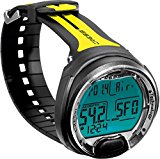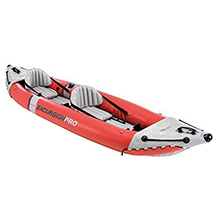Swim goggles purchasing advice: how to choose the right product
- The most important facts in brief
- Swimming goggles are suitable for both recreational and competitive swimmers.
- Buyers should pay particular attention to the right fit.
- There are three different types of swimming goggles: Suction cup goggles, Swedish goggles and swimming masks.
- Swimming goggles ensure good visibility under water and protect the eyes from bacteria as well as germs.
- An anti-fog coating and an adjustable nose bridge are recommended.
The purposes of swimming goggles are versatile
Normal goggles are responsible for compensating for a defective vision of the eyes. In addition, tinted lenses offer protection from UV rays that can damage the eye. Under water, vision works differently again. The human eye can see something in principle, but the images under water appear blurred in the truest sense of the word. This is due to the refractive index to which the eyes cannot adapt. Our eyes do not have the ability to adjust visual acuity. If swimmers or divers put goggles in front of their eyes so that there is an air space between the eye and the water, the refractive power is maintained and we see better.
So to have good vision in the water, swimmers use specially designed goggles that adapt the eye to the element. Not only do swimming goggles help you see better underwater, but they also protect your eyes from irritation that can be caused by chlorine or salt water. Every swimmer has certainly experienced the following scenario: after training, the white skin of the eye, also called the sclera, appears reddish.
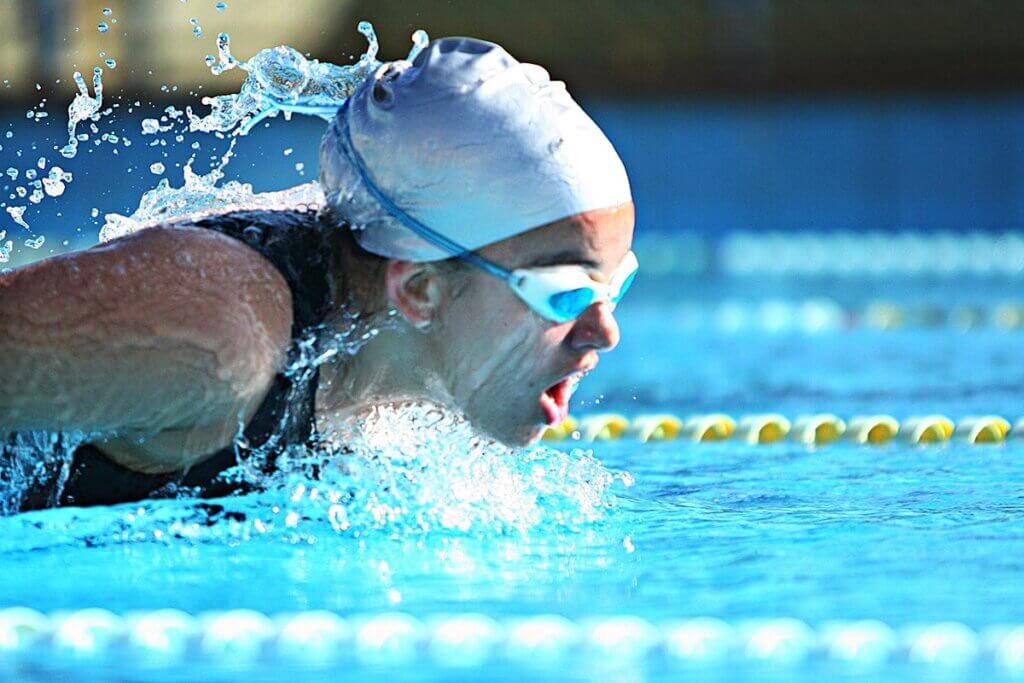
The eyes feel dry and sometimes even itch. Red and burning eyes are a thing of the past with the use of swimming goggles. Of course, swimming goggles also keep out bacteria, germs and other tiny particles that are harmful to the eyes.
The intended use is crucial for the right choice of swimming goggles. Different goggle models are suitable for competitive swimmers, triathletes or hobby athletes.
Well-known brands
Arena | Zoggs | Speedo | Cressi | Aqua Sphere | Limuwa | Sportastisch
What is the difference between swimming and diving goggles?
Swimming goggles are not to be confused with diving goggles, also called diving masks. Unlike swimming goggles, diving masks seal off the nose with a nose notch. The nose is enclosed in the air space of the goggles because divers equalise pressure under water if they dive more than 1.5 metres deep. Due to their shape and size, the masks have a high flow resistance. Swimming goggles do not have this high resistance; they are characterised by their small and light shape. Swimming goggles have a nose bridge that does not enclose the nose. With normal swimming goggles, swimmers can dive to a maximum depth of two metres. Goggles are definitely not suitable for deeper dives. The only activity for which users could theoretically use both types of goggles is snorkelling, although other goggles with an integrated snorkel are much better suited for this.
Three different types of goggles
Depending on the swimming activities for which you use the goggles, you should choose a specific model. Therefore, before you decide to buy, find out about the three categories of swimming goggle types. The costs vary between at least 5 and about 100 euros. These are the respective advantages and disadvantages of the three different types of goggles – suction cup goggles, Swedish goggles and swimming masks:
Suction cup goggles
The suction cup goggles are recommended for both recreational swimmers and triathletes. They are also well suited for long training sessions or later for the triathlon that has been worked towards for a long time. This also applies to open water. It is the all-rounder among swimming goggles. Their rim or seal is made of soft silicone. They fit the head and the shape of the face without any problems. However, there is sometimes the possibility that the goggles slip during a take-off jump into the water because the soft rim sits on the eye sockets.
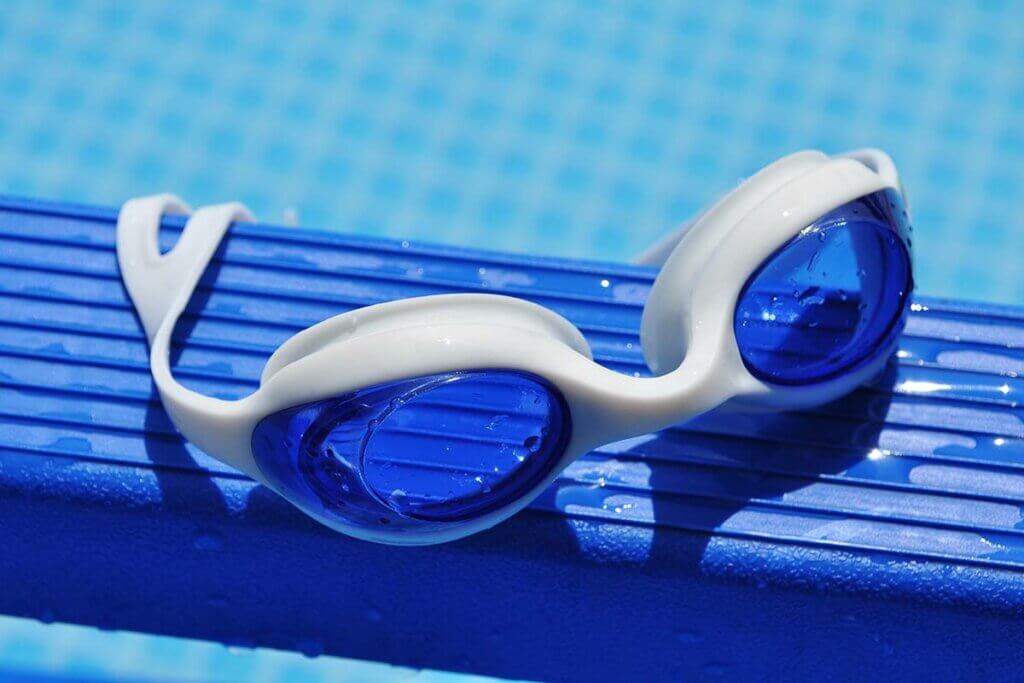
Advantages
- Versatile use
- High wearing comfort
- Good head fit
Disadvantages
- Risk of slipping
Sweden Glasses
The Sweden goggles are especially suitable for competition swimmers and triathletes. It has a greater hardness in terms of material and fitting. Two hard plastic shells, a rubber band and a plastic tube are included. High-quality Swedish goggles sit absolutely firmly on the eye sockets even after the starting jump into the pool as well as during the turning roll. Swimmers may have to get used to wearing the goggles because they have no padding, i.e. no silicone rim. Wearing them may be a little uncomfortable at first.
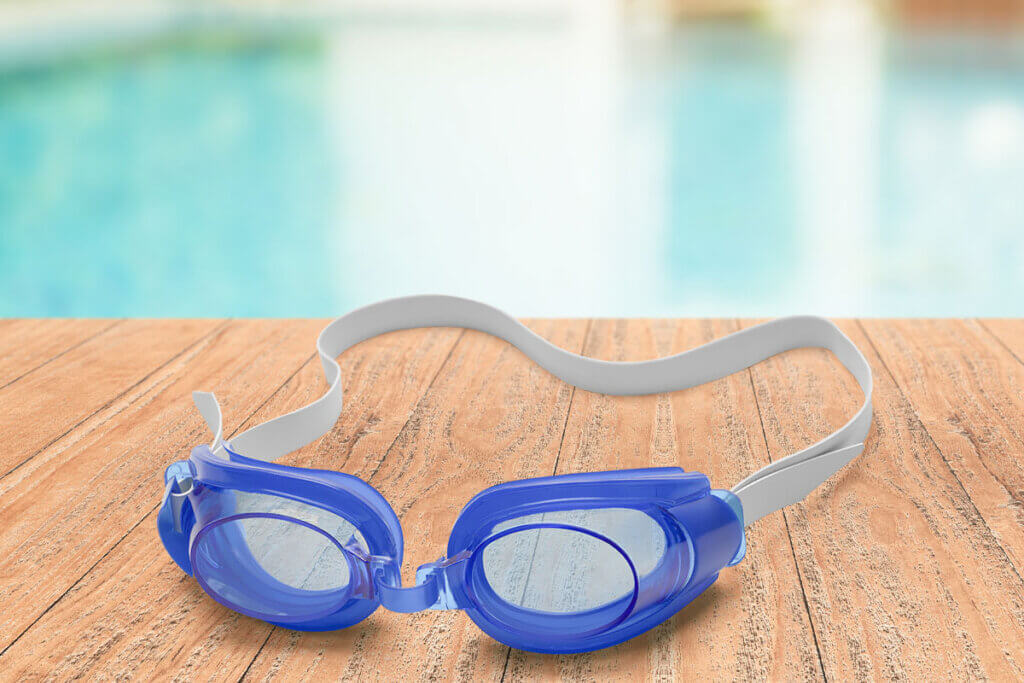
Advantages
- Streamlined shape
- Firm fit
- Wide field of vision
- Durable
Disadvantages
- Uncomfortable to wear
- Takes some getting used to
- Few suitable for long distances in open water
Swimming mask
Swim masks are used by recreational swimmers, open water swimmers and also triathletes. This type of swimming goggle is most similar to diving goggles, as it has larger goggle shells than the other two types of swimming goggles. However, the similarity is only in terms of appearance and not in terms of use. A wide silicone rim provides a firm fit on the forehead and cheekbones. The swimming mask does not sit directly on the eye sockets. Thus, this model scores with particularly high wearing comfort.
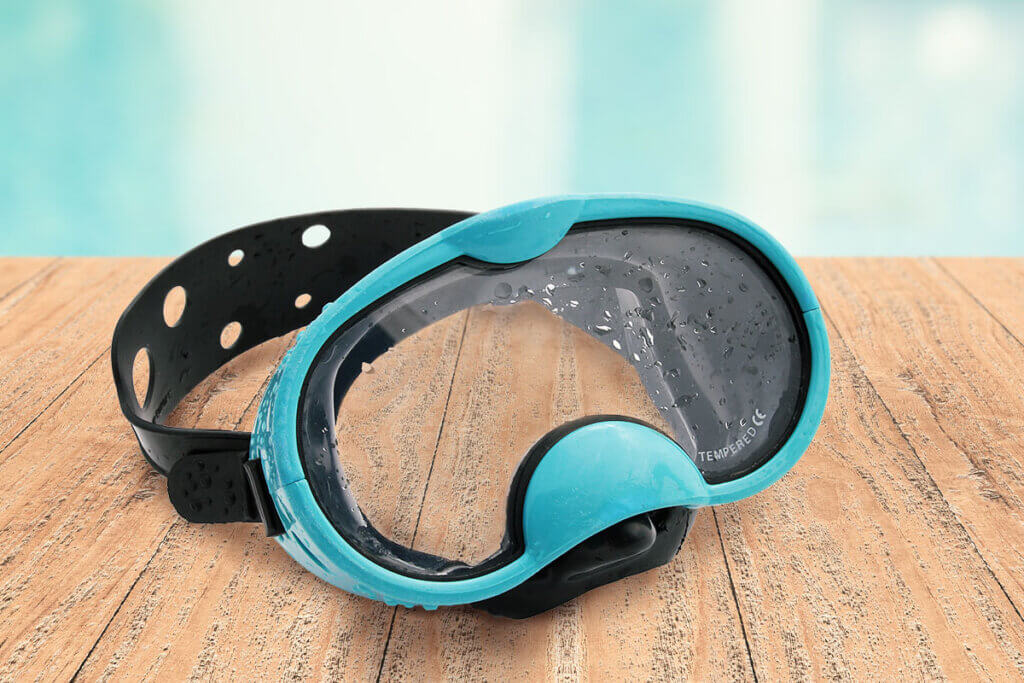
Advantages
- Comfortable to wear
- Very soft silicone edge
- Wide field of vision
- Good for beginners and children
Disadvantages
- Risk of slipping
Other types of glasses
In addition to the presented common types of glasses, you will also find special glasses that are designed for specific needs. Because children, allergy sufferers or people with a visual impairment also want to experience maximum comfort while swimming.
Swimming goggles for children
Children’s swimming goggles, on the other hand, are actually larger than those for adults. Children’s goggles need to be bigger for two reasons. Firstly, children do not have the same motor skills as adults and are therefore not yet able to handle small goggles appropriately. Secondly, small glasses are said to put more pressure on the eyes, which must be avoided at all costs for children. The manufacturers usually provide information on the age from which the respective product should be used.
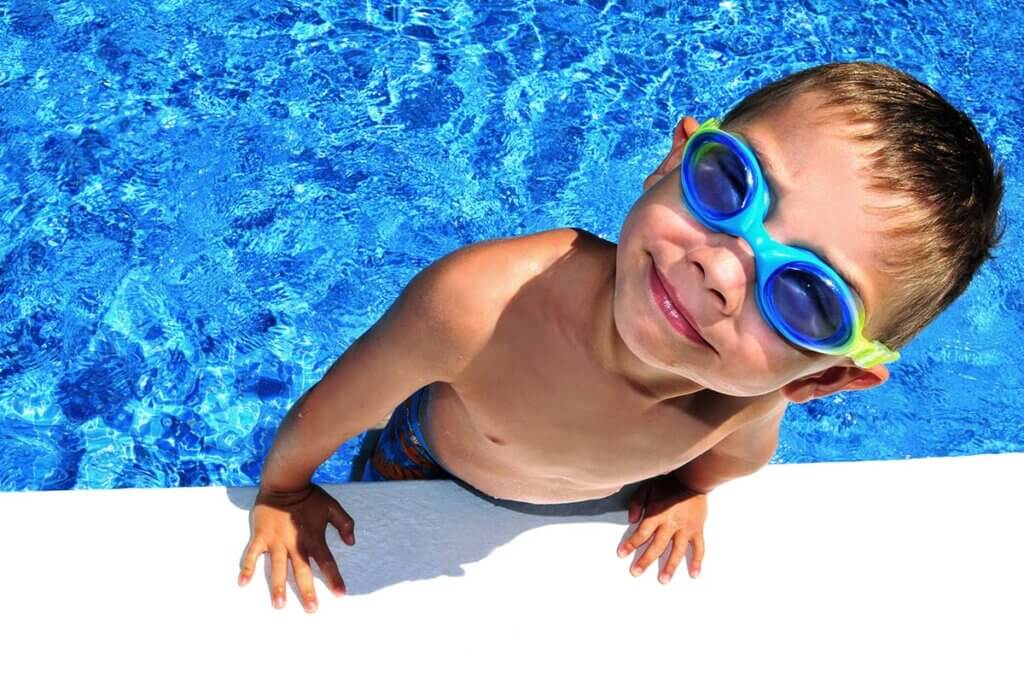
Are swimming goggles available with prescription?
If you wear glasses on land, you may also need a visual aid for the water. Manufacturers offer optical swimming goggles with prescription for adults and children. These goggles have a certain number of dioptres and use special lenses – just like normal glasses – to compensate for impaired vision under water. The disadvantage, however, is that these glasses make more sense for short-sighted people. However, some manufacturers offer special lenses for farsighted people. Unfortunately, the costs are also higher here.
Contact lenses in the pool
If your swimming goggles fit perfectly, you can wear contact lenses under them. Daily disposable lenses are recommended in case you lose a lens.
Swimming goggles for allergy sufferers
Anti-allergen swimming goggles do not usually sit directly on the eye sockets. They avoid contact with this particularly sensitive part of the face and are also latex-free. They often have a seal made of neoprene or silicone material. However, if skin irritation occurs around the eye, check whether the goggle strap may be tied too tightly.
The most important purchase criteria
Before buying, decide for what purposes you want to use the swimming goggles. Competitive swimmers, for example, value a wide field of vision and a very tight fit. Recreational swimmers sometimes prefer large eye cups that have a silicone rim. Open water swimmers may focus on a tint in the goggles to protect them from sunlight. Triathletes look for optimal water resistance. In all cases, a perfect fit and the right lenses are among the most important criteria.
What is the right fit?
A new pair of swimming goggles must fit perfectly and be absolutely waterproof. To find out which goggles are the right ones, it is advisable to try them on. The so-called suction test, in which swimmers press the goggles onto their eyes, provides information on whether the shape fits. During this dry test, the glasses must not fall off the face due to the negative pressure created, but should stay in place without using the strap, at least for a few seconds. The pressure around the eyes is ideally perceived as comfortable. Many glasses also offer adjustment options on the headband and nose bridge. Some goggle models are only available in a uniform standard size, others come in different sizes – or even especially for women. Manufacturer speedo, for example, advertises swimming goggles for women and children that are specially adapted to narrow faces.
These goggles are available
Lens tinting or mirroring can be useful when swimmers are exposed to extreme light conditions. For indoor swimming, clear lenses or those in purple and light blue are suitable. For dark open water, swimmers should use yellow or orange lenses. Outdoor swimming in full sun requires mirrored or dark (brown, blue, grey) lenses. If you often swim outdoors in the sun, make sure you have UV protection. The respective types of glasses are available in many colours.
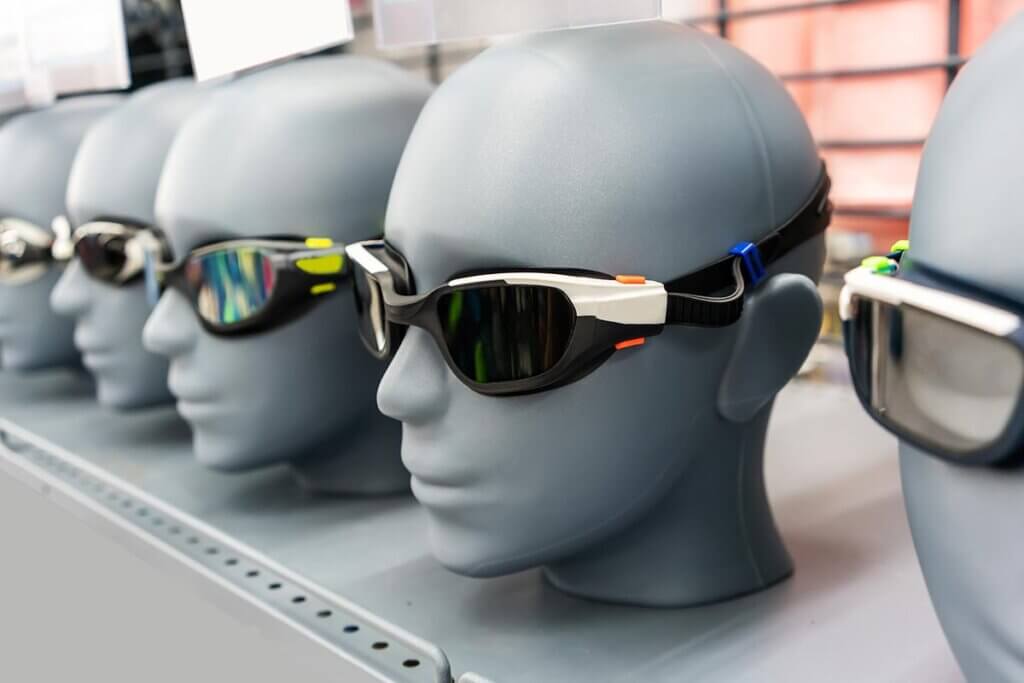
Polarised lenses
These lenses are preferred by water sports enthusiasts who often train in very bright light conditions. Polarised lenses offer very good glare protection and are therefore suitable for both open water and indoor swimming pools with bright light.
Mirrored lenses
Mirrored lenses reduce glare and make swimming in bright light conditions more comfortable. They are therefore suitable for open water and indoor pools.
Transparent lenses
If you often swim in low light, you should use transparent lenses. They guarantee good visibility when it is dusk or dark. They are therefore ideal for use in open water and indoor pools with low light levels.
Blue lenses
Swimming goggles with blue lenses are among the all-rounders. Glare protection in bright light is guaranteed. Visibility is also good in darker light. They are therefore predestined for use in open water and indoor swimming pools.
UV protection
In principle, most of the good quality swimming goggles have UV protection. Swimmers who frequently train outdoors in open water should make sure that the goggle lenses have 100 percent UV protection. By the way, UV radiation can be harmful to the eyes even when the sun is not shining. In general, sensitive eyes need maximum protection. However, UV protection is not necessary in indoor swimming pools. However, bear in mind that many indoor pools also have an outdoor pool. If the swimming goggles have UV protection, you can switch back and forth between indoor and outdoor pools with a clear conscience.
Attention: Is a UV filter included?
The tint of the lenses says nothing about the UV protection of the goggles. The tints only help to improve visibility in the water. Look for a separate indication if necessary.
What can the anti-fog coating do?
This special coating, also called anti-fog coating, is located on the inside of the goggle lenses, just like in good ski goggles. Its purpose is to prevent the goggles from fogging up due to the temperature difference between the goggles and the face. All spectacle wearers know only too well that fogging up can be very annoying. However, the layer is extremely sensitive and can quickly be damaged when cleaning. Therefore, you must not wipe glasses with an anti-fog coating by hand or with cloths. Users should rinse the glasses with clear water and then let them air dry. Good quality glasses should also be scratch-resistant.
Nose bridge
The swimming goggles must not only fit perfectly around the eyes, but also be comfortable to wear on the nose. Some models have a fixed nose bridge, others are adjustable or even replaceable. If the nose bridge is fixed, the distance between the lenses cannot be adjusted. This can lead to the glasses letting water through.
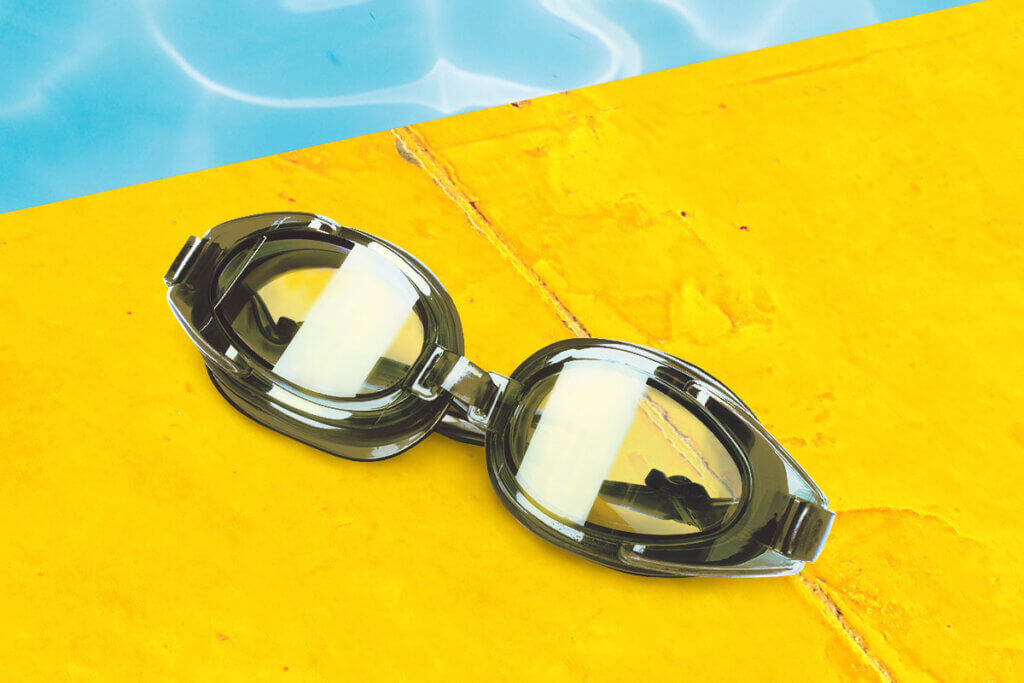
The advantage of adjustable nose bridges is that the distance can be adjusted exactly to the face – narrower or wider as needed. Some models have nose bridges in different sizes that can be exchanged. In swimming masks, the nose bridges are always fixed. With swim goggles, swimmers adjust the nose bridge during assembly at the beginning. In most cases, however, changes can be made afterwards.
Fastener
An adjustable closure on the head is especially important to adjust the fit of the goggles properly. Most models have a continuous strap. Bathing cap wearers are usually happy with this. However, if you swim with open hair, a click closure is recommended. The strap does not have to be pulled over the head, but simply clicks together at the back of the head. Some swimming goggles score points with a quick-release fastener. This is the easiest way to adjust the goggles.
Water resistance
The better the swimming technique, the lower the water resistance. However, swimmers also influence the resistance in the water with their equipment, including the choice of goggles. Professional swimmers therefore usually choose very small goggles to keep the resistance as low as possible. For casual swimmers, this criterion is less important. Due to their size, swimming goggles have a greater resistance than the smaller suction cup goggles or the Swede goggles.
Design
Not entirely unimportant for some swimmers is the design of the goggles. Even though most swimming goggles generally have a simple, sporty design, some models come in different colours. Children’s goggles in particular often come in a colourful design. However, it is advisable to pay attention to the right fit first, and then to design aspects.
Helpful tips for use
Before the first use, you should observe possible specific application instructions. Experienced swimming professionals know this, and this advice applies above all to beginners and recreational swimmers. Some goggles, for example, require special care or must not be touched with the hands on the inside.
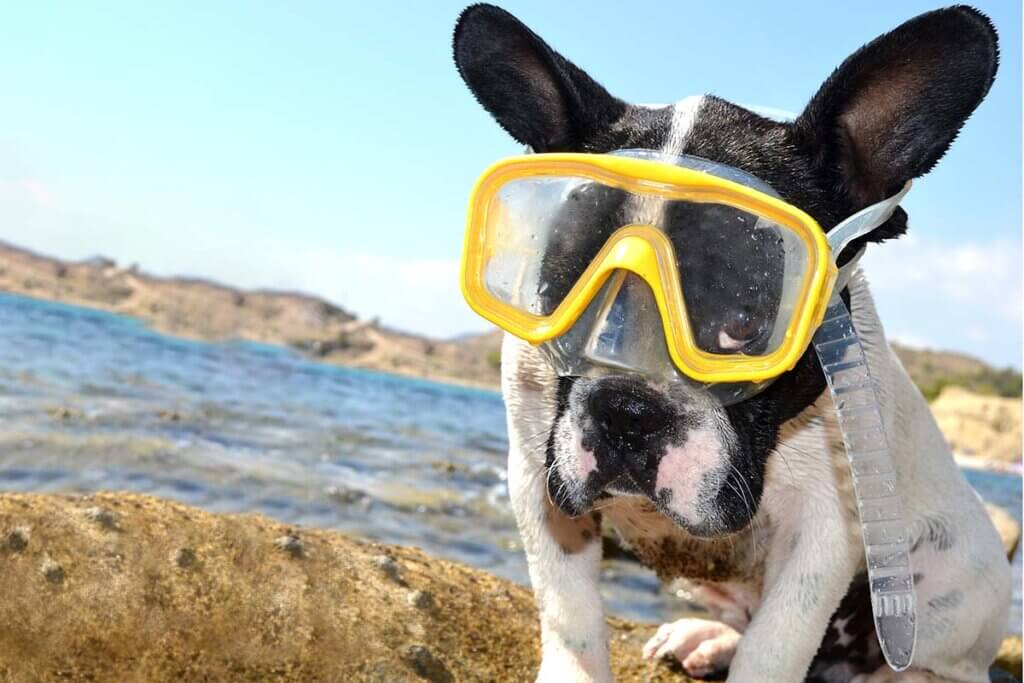
Sensitive coating
All swimming goggles should be cleaned carefully. The insides of the lenses are particularly sensitive, so use clear, cold or lukewarm water after swimming practice to wash off any chlorine or salt residue. This is especially true for goggles with anti-fog coating, this could be quickly scratched by friction and touch. Also, do not use your fingers to wipe away residues on the inside of the lenses. Cloths are also taboo! Gently shaking the goggles helps them dry.
What do I do if the swimming goggles fog up?
Anti-fog coatings prevent this problem. If your swimming goggles fog up anyway, you should never touch the inside with your fingers or rub them with a cloth. In fact, a little spit will help to remove the fogging. Why? In addition to proteins and enzymes, our spit contains so-called mucins. This mucous substance forms a kind of protective film on which the condensed drops roll off. So: spit on the inside of the lenses, rinse them with water and put the glasses back on.
Equalise the temperature
Another trick to prevent your goggles from fogging up in the first place is to equalise the temperature. This is because swimming goggles usually only fog up if the temperature difference between the inside and outside is too great. Before putting on the swimming goggles, submerge your head once under water and only then put on the goggles. This will bring the temperature of the head closer to the temperature of the water.
Store swimming goggles in their case
Manufacturers usually supply swimming goggles with a matching case. Swimmers should always keep their goggles in this case when they are not using them. Hard cases are best for storage. They offer the best protection against scratches and other external influences.
Do not use soap
Cleaning swimming goggles with soap is taboo. Soaps and other detergents can cause long-term damage to the lenses and any anti-fog coating that may be present.
Do not use chemical cleaners
The use of rinse aid or washing-up liquid can not only damage the swimming goggles but also irritate the eyes in case of eye contact!
How do I put the swimming goggles on correctly?
Putting on swimming goggles works in a similar way to the first fitting. Swimmers first press the eye cups lightly on the eye sockets and align them correctly. Then they guide the strap over their head or click the fastener together. Do not tighten the goggle strap until it is in an optimal position. Ideally, the band should sit horizontally. This sequence makes sense as it helps swimmers avoid zipping the goggles back. If you prefer a very tight fit, wear the goggles under a swimming cap. Removal is basically in reverse order. After training, first loosen the strap behind the head or open the click fastener and then detach the eye cups from the eye sockets. The risk of injury is kept as low as possible during this process.
Tip for putting on a swimming mask
If swimmers have a swimming mask that does not stick to the face area by itself due to its size and fit, take one hand to help and hold the goggles lightly. Then pull the strap over your head. Then release the eye cups of the glasses and tighten the band when it is correctly aligned. This procedure is equally suitable for children’s swimming goggles.
These problems can occur with swimming goggles
Especially swimming goggles that do not have an anti-fog coating fog up more quickly. However, since the inside of these models is not as sensitive as the inside of anti-fog products, it is possible to rinse the lenses very carefully with a small drop of shower gel. However, firm rubbing is not recommended here either.
If you have old swimming goggles, you will notice that the headband loosens over time. If it is not yet completely worn out, simply pull it a little tighter. Otherwise, there is a risk of water getting into the goggles while swimming.
If the swimming goggles slip more and more often, for example during the starting jump, check the fit of the goggles. If necessary, it may make sense to think about buying a second pair of swimming goggles that fit a little tighter and are more suitable for starting jumps and turning rolls at the edge of the pool.
Fig. 1: © Erich Sacco / stock.adobe.com | Fig. 2: © magnesium2 / stock.adobe.com | Fig. 3: © pixelrobot / stock.adobe.com and © sorrapongs / stock.adobe.com | Fig. 4: © L.Bouvier / stock.adobe.com and © sorrapongs / stock. adobe.com | Fig. 5: © Natallia Vintsik / stock.adobe.com | Fig. 6: © v74 / stock.adobe.com | Fig. 7: © Iurii Kachkovskyi / stock.adobe.com and © spf / stock.adobe.com | Fig. 8: © Natallia Vintsik / stock.adobe.com

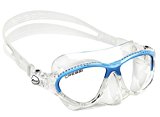
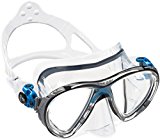
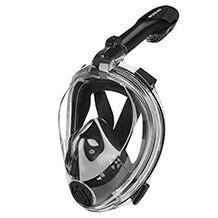















 9,723 reviews
9,723 reviews



